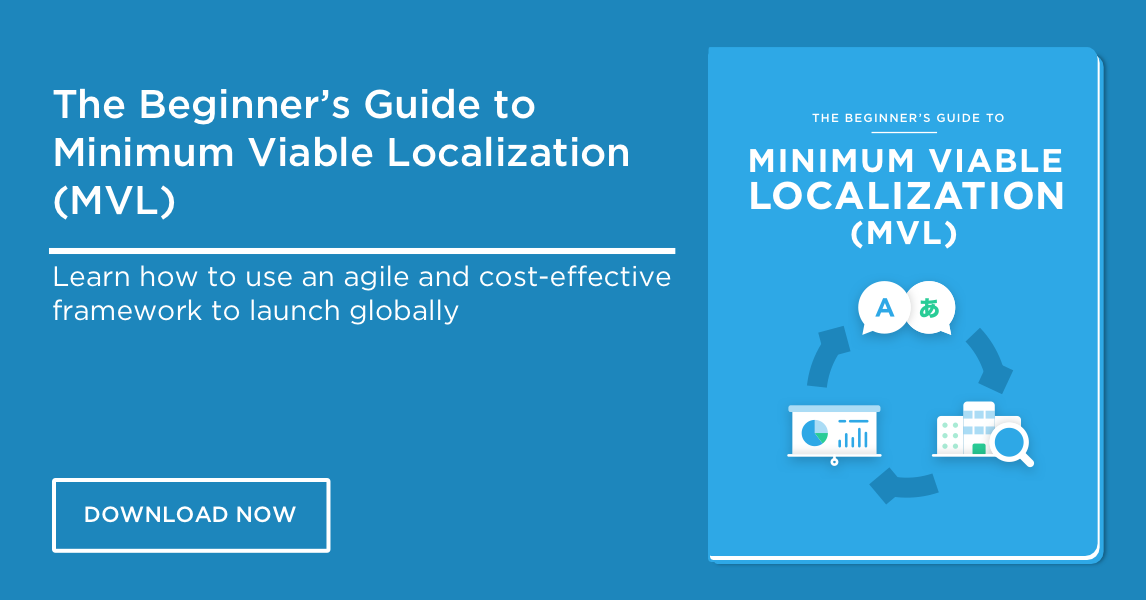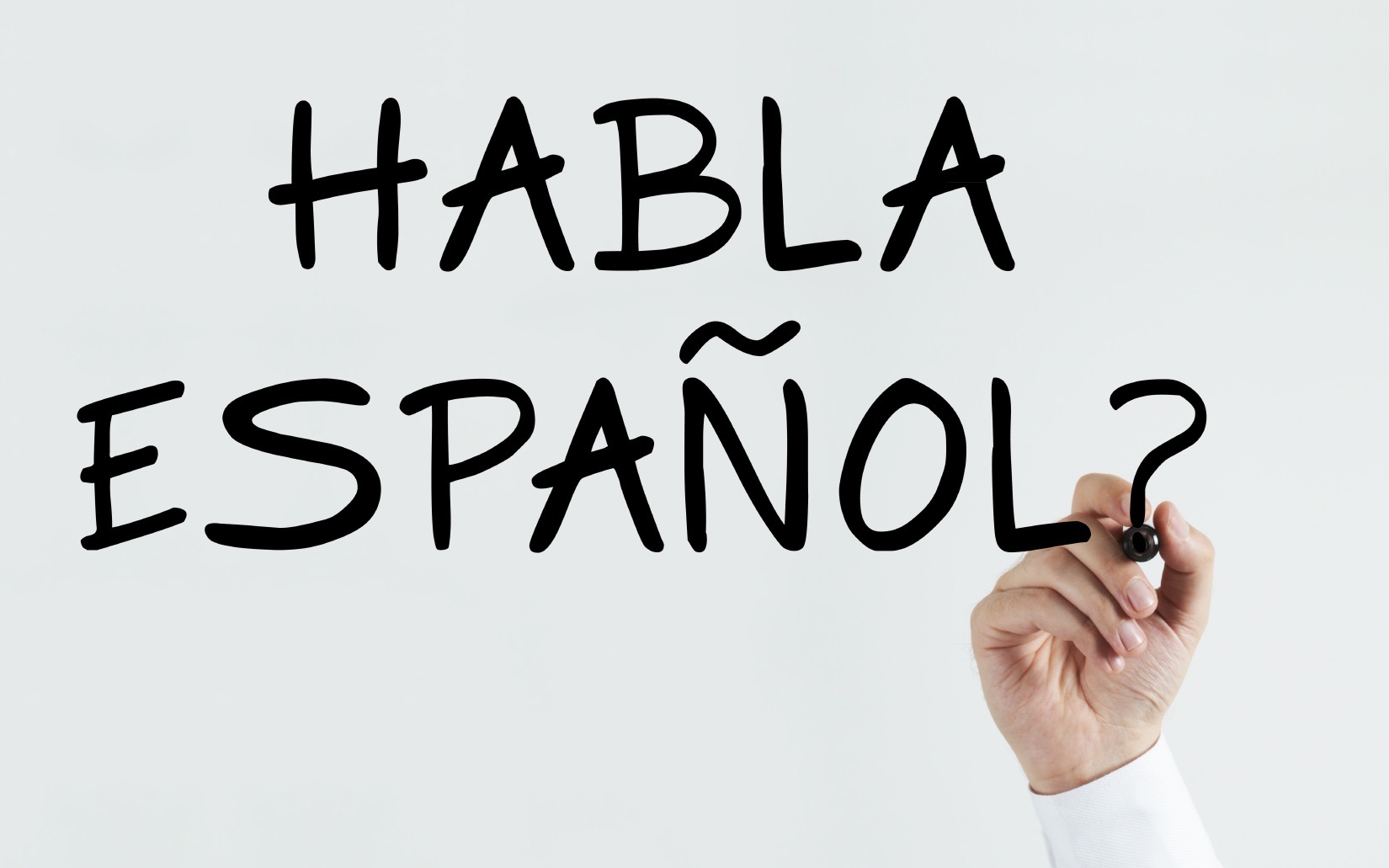Localization Tips: Overcoming the Top 5 Challenges in English-Spanish Translations
This post is part of our new series “Translation Challenges” highlighting the unique localization difficulties when it comes to translating to specific languages. With each language, we’ll also offer some localization tips that may help you with your project. Future posts will cover other popular languages like German, French, Chinese, and many more. Subscribe to our blog newsletter so you don’t miss out!
¿Hablas español?
Chances are, given the world’s current language breakdown, there’s a huge chance you do. 427 million chances, to be exact.
With Spanish speakers spanning Europe, the Americas, Africa, and Asia-Pacific, it is estimated that more than 427 million people speak Spanish as a native language. This makes it the language with the second largest group of native speakers in the world.
Spanish is the official language of 22 countries and is expected to be a first language of 50% of the United States population within 50 years—in fact, there are way more native Spanish speakers in the United States than Spain itself!
Opportunities in Spanish-speaking markets
Spanish is the 3rd most used language on the internet, growing 1,312.4% in the last 15 years. It’s one of the top 10 languages for mobile app localization and also fuels a significant gamer population. Latin America has a rapidly growing game industry, with the highest year-on-year growth for games in the world (20.1% this year) for a $4.1 billion total revenue.
According to research by Nielsen, companies looking to market to the Hispanic population in the United States should devote just as much attention to localizing their content, even for bilingual English and Spanish speakers. The reason? People prefer reading and making purchases online in their native language.
Translating to Spanish is tricky
As with any language translation, making English content fit into a Spanish context has many challenges. Spanish is particularly difficult because of its close ties to Italian and Portuguese as a Romance language, which differs from English’s Anglo-Saxon roots.
Here are 5 examples of challenges in English-Spanish translation and how you can best prepare for them:
Localization Challenge 1: There is no One True Spanish — there are multiple.
Just like there are variations in the English spoken in North America, the UK, and Australia, there are major differences in the multiple regional varieties of Spanish, such as European Spanish, Spanish of the Americas, as well as dialect differences within Spain and Hispanic America.
While these differences are most apparent in pronunciation, there are significant differences in grammar, formalities, as well as names of food, clothing, and everyday objects.
Solution:
Depending on where your target user or reader is located, it’s worth identifying the specific Spanish spoken and translating for that strand of the language specifically. If you don’t include this as part of your localization project, you risk your audience becoming confused, or worse, frustrated that you did not actually know them—and their language—well.
When screening translators, make sure they have translation experience in the specific regions you are targeting.
Localization Challenge 2: Spanish is a longer language
Ever pick up a side-by-side translated text or bilingual book at the bookstore only to realize that the text for one language has many more pages than the other?
Not all languages are created at equal lengths. Some naturally have more words in the sentence structures than others. Research shows that Spanish translations are about 30% longer than their original English source text.
Solution:
If you’re considering translating text that needs to fit to a specific length, like an app store description or interface text, it’s important to hire a professional translator who will be able to create shorter text while prioritzing your original messaging.
Localization Challenge 3: Spanish has many cultural nuances unique to its own language
The level of formality built into every language is different. In Spanish, the formal pronoun to “you” (Usted instead of tú) and a more elevated title are often used as a sign of respect or in a formal setting, depending on region. Using nicknames as well is common in many contexts.
Solution:
Whether you’re trying to localize a product that is formal or informal, it would be helpful to find a translator with experience translating to a wide demographic range of audiences.
Localization Challenge 4: Spanish and English have completely different styles of grammar
Because of its different language origins, these two languages are very different in basic grammar. These are some key differences among many:
Syntax:
Despite using the same Subject-Verb-Object structures (i.e. “Xiomara threw the flowers,”) Spanish grammar allows for more leniency with the sentence structure.
For example, an emphasized subject in Spanish is often placed at the end of a sentence. So, if we want to emphasize that Xiomara, not Jane, threw the flowers, in Spanish, the literal syntax would be, “threw the flowers Xiomara” or, “Tiró las flores Xiomara.”
As you can tell, this doesn’t work in English!
Gender:
Spanish is a two-gender language, meaning nouns are assigned genders, like in French, and can be considered male or female.
Generally, objects that end in -a are feminine, while those ending in -o are masculine. But this is not always the case! Despite being worn by women, bikinis are actually a masculine noun in Spanish (el bikini/biquini.)
Verbs:
There are six different spellings for each verb tense in Spanish, depending on the subject, but English verbs are altered by suffixes for each tense.
Take “bailar” (to dance) as an example. The verb in English is only modified in the third-person singular, whereas it conjugates into 3 subjects and numbers in Spanish, making six versions of the verb in each tense. So we say “Yo bailo, tú bailas, ella baila, nosotros bailamos” to mean “I dance, you dance, she dances, they dance”.
Adjectives:
They usually come after the noun in Spanish, but before the noun in English. Spanish adjectives are also altered by the gender and number of the noun, but English adjectives never change.
Solution:
Many subtle differences in the grammar require a careful ear for native grammar. Look for a native-level translator who can pick these out without a problem.
Localization Challenge 5: English and Spanish look deceptively the same
Despite their different origins, many words in Spanish and English look very similar, even though their definitions could not be more different. This is because, like other Romance languages, a lot of Spanish actually evolved from Latin, which English is influenced by. As a result, English and Spanish share many words in common from Latin, despite their definitions evolving differently over time. These are known as “false friends.”

“Pie” in Spanish looks like it refers to a tasty pastry when really, it means your foot (which we don’t recommend eating.) “Éxito” looks closest to a quick escape (exit), when it actually refers to “success.”
Be careful – weeding out false friends is especially important to the translation process because they can fool non-native speakers without appearing obviously tricky. Imagine accidentally translating “groseria” for “grocery” when it means gross or crude, or “embarazada” for “embarrassed” when it means pregnant!
Solution:
Hire a bilingual translator with high fluency in both English and Spanish so they won’t be fooled by false friends. In your own translations, do occasional spot-checks and look up words that seem like an English word you know, so you can make sure these similar words don’t fall through the cracks.
Wrap Up
With its rich history and diverse varieties, the Spanish language presents many interesting and engaging challenges in translation. If you’re interested in getting text translated to or from Spanish, we offer professional translation services for Spanish, as well as 50+ other languages. Check out our website www.oneskyapp.com/ for more info.
Interested in going global? It doesn’t take much to expand your business to one new market. Learn more from our free Minimum Viable Localization (MVL) guide to learn more:
About OneSky
OneSky provides seamless end-to-end localization solutions for thousands of mobile apps, games, websites, and businesses worldwide. We offer professional translation services in 50+ languages and a translation management system (TMS) with API integrations and plugins to streamline your workflow. We hire and carefully screen our own translators to ensure the highest control over quality. Using OneSky’s powerful QA features, cross-functional teams collaborate efficiently to deliver faster release cycles and higher quality translations. See how you can go global at www.oneskyapp.com
 hbspt.cta.load(1761271, ’37e9bd0f-00ce-4a2b-8d63-2a4c4a4fa23e’, {});
hbspt.cta.load(1761271, ’37e9bd0f-00ce-4a2b-8d63-2a4c4a4fa23e’, {});
Don’t miss out on localization resources and tips! Subscribe to our newsletter to learn the best ways to go global.



 Written by -
Written by - 




 Written by
Written by 



It is always hard to translate any text, between any two languages, in a way that maintains the same meaning and style. Sometimes it is acceptable to preserve the meaning with slight changes in the tone. I would suggest, it is better to take service from professionals rather than taking any shortcut. You can also visit Medtrans for any translation queries.
Talking about “false friends” you said: “Éxito” looks closest to a quick escape (exit), when it actually refers to “success.”
Here’s another false friend: “actually” in Spanish can’t be translated to “actualmente”, but to “de hecho”, what’s very different.